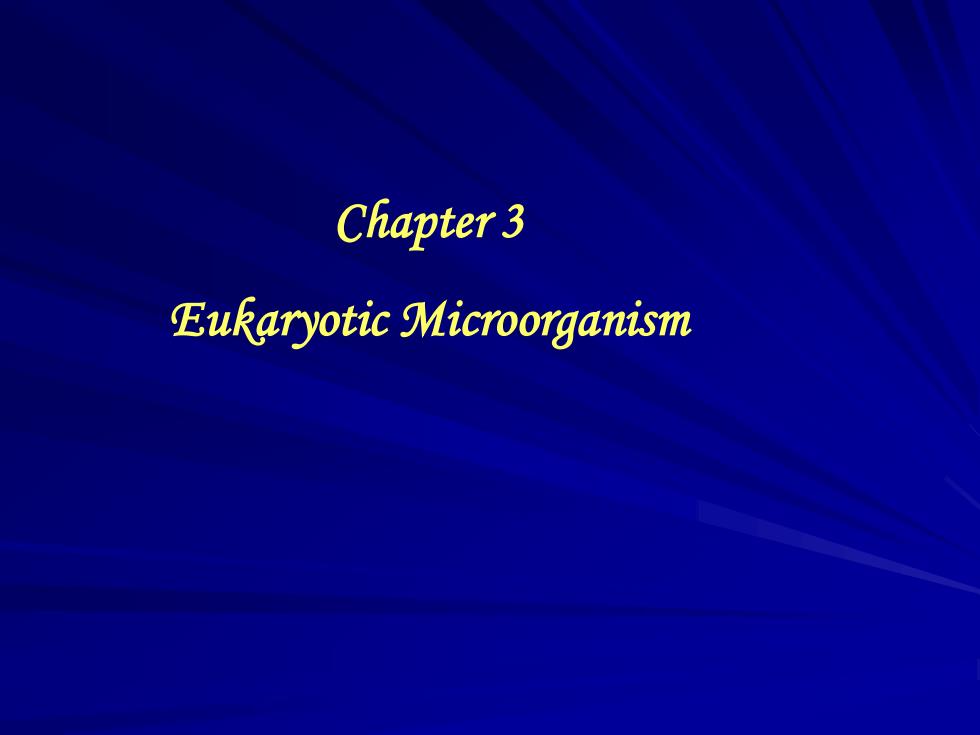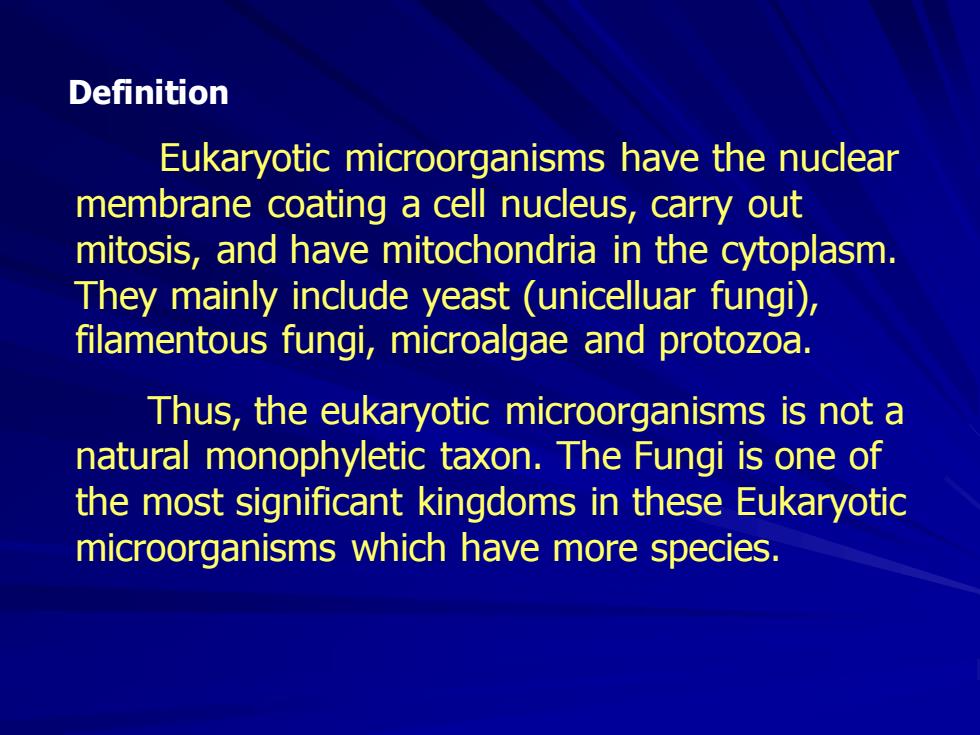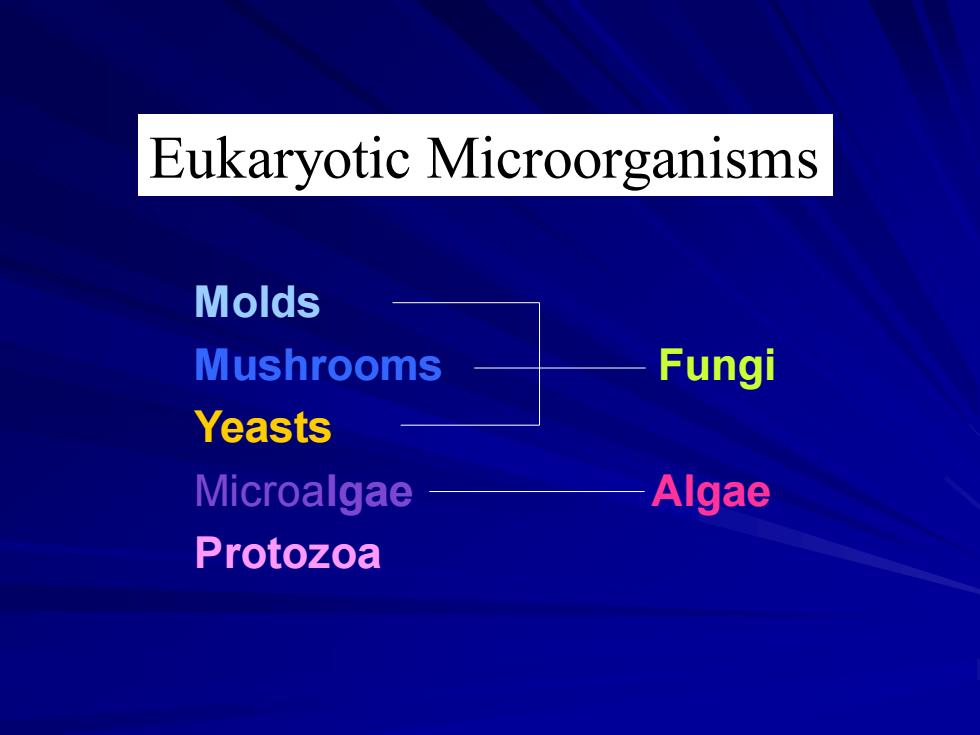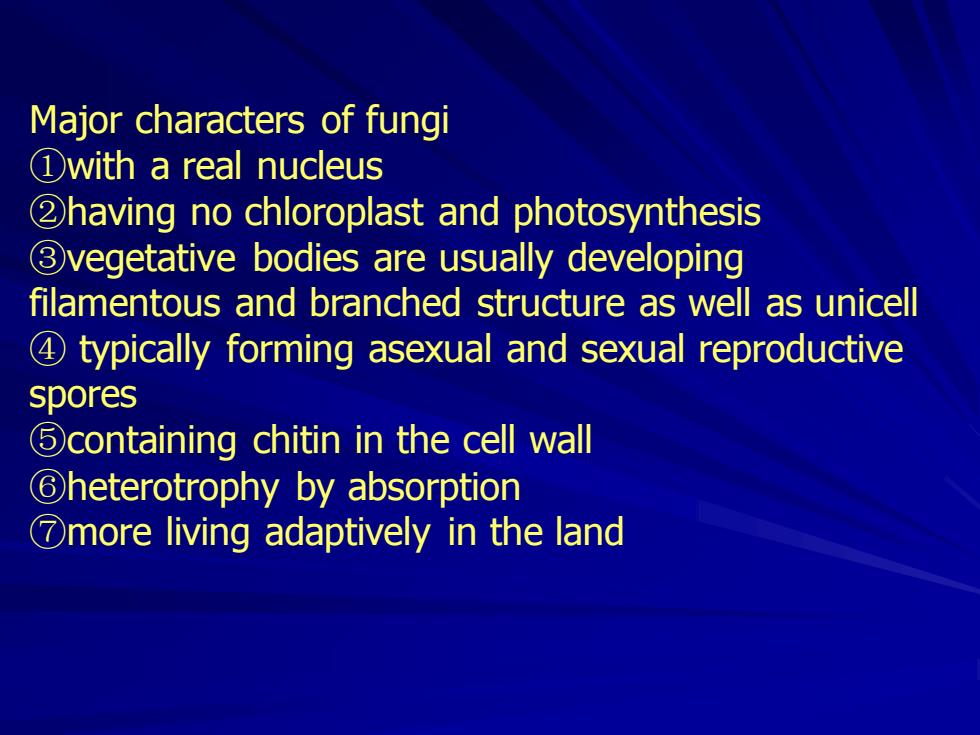
Chapter 3 Eukaryotic Microorganism
Chapter 3 Eukaryotic Microorganism

Definition Eukaryotic microorganisms have the nuclear membrane coating a cell nucleus,carry out mitosis,and have mitochondria in the cytoplasm. They mainly include yeast (unicelluar fungi), filamentous fungi,microalgae and protozoa. Thus,the eukaryotic microorganisms is not a natural monophyletic taxon.The Fungi is one of the most significant kingdoms in these Eukaryotic microorganisms which have more species
Eukaryotic microorganisms have the nuclear membrane coating a cell nucleus, carry out mitosis, and have mitochondria in the cytoplasm. They mainly include yeast (unicelluar fungi), filamentous fungi, microalgae and protozoa. Thus, the eukaryotic microorganisms is not a natural monophyletic taxon. The Fungi is one of the most significant kingdoms in these Eukaryotic microorganisms which have more species. Definition

Eukaryotic Microorganisms Molds Mushrooms Fungi Yeasts Microalgae Algae Protozoa
Molds Mushrooms Fungi Yeasts Microalgae Algae Protozoa Eukaryotic Microorganisms

The kingdom Fungi is a natural taxon.Members in this kingdom involve very tiny yeast and larger mushroom.In the biologist's viewpoint,this term fungus indicates those organisms that have true nucleus,produce spores by asexual or sexual reproduction,absorb the nourishment material, have no chloroplast. As the development of biosystematics including fungal systematics,some organisms that were thought to been belong to the Fungi in the past have been classificated into other kingdoms now,For example,Oomycetes and Hyphochytidiomycetes is put into the kingdom Chromista or Straminipila,Myxomycetes and Plasmodiophoremycetes into the Protozoa
The kingdom Fungi is a natural taxon. Members in this kingdom involve very tiny yeast and larger mushroom. In the biologist’s viewpoint, this term fungus indicates those organisms that have true nucleus, produce spores by asexual or sexual reproduction, absorb the nourishment material, have no chloroplast. As the development of biosystematics including fungal systematics, some organisms that were thought to been belong to the Fungi in the past have been classificated into other kingdoms now, For example, Oomycetes and Hyphochytidiomycetes is put into the kingdom Chromista or Straminipila, Myxomycetes and Plasmodiophoremycetes into the Protozoa

Major characters of fungi ①with a real nucleus 2having no chloroplast and photosynthesis 3vegetative bodies are usually developing filamentous and branched structure as well as unicell 4 typically forming asexual and sexual reproductive spores containing chitin in the cell wall 6heterotrophy by absorption more living adaptively in the land
Major characters of fungi ①with a real nucleus ②having no chloroplast and photosynthesis ③vegetative bodies are usually developing filamentous and branched structure as well as unicell ④ typically forming asexual and sexual reproductive spores ⑤containing chitin in the cell wall ⑥heterotrophy by absorption ⑦more living adaptively in the land